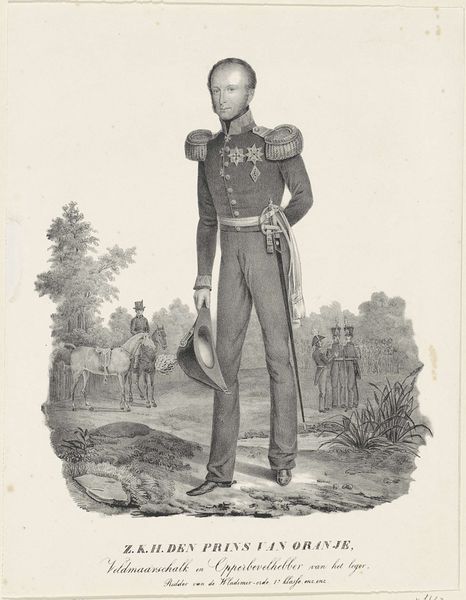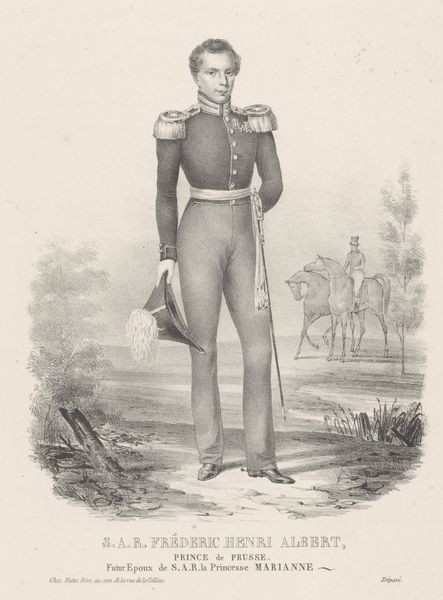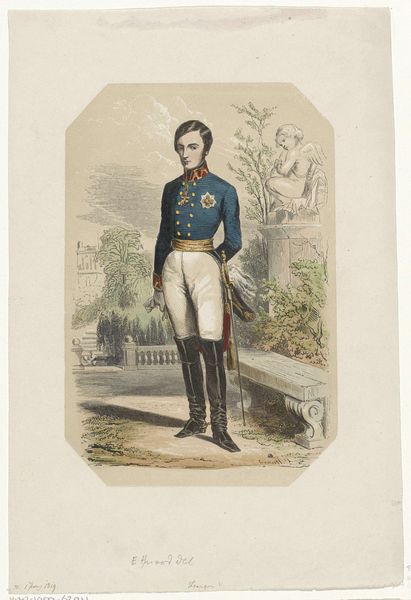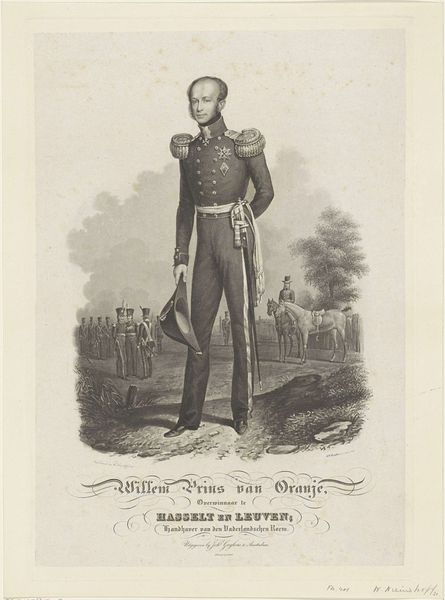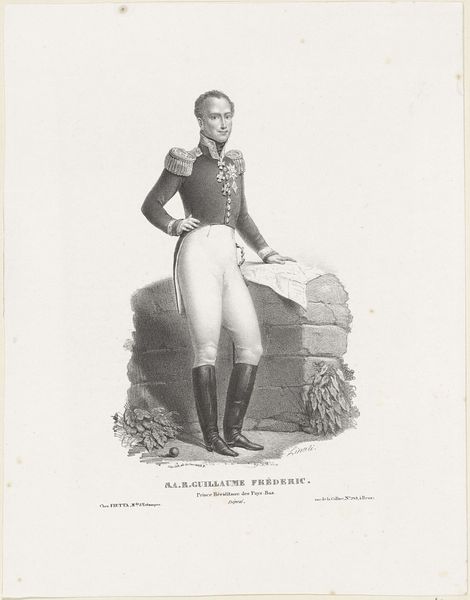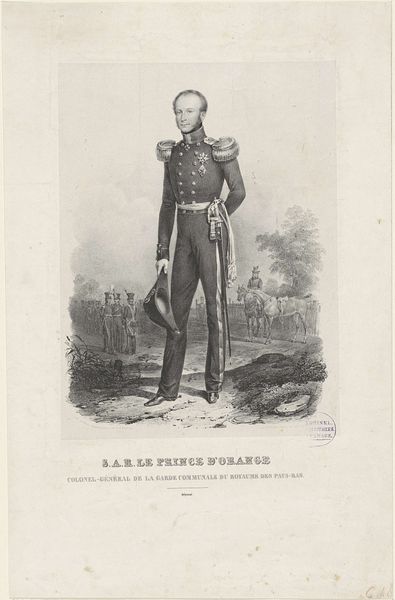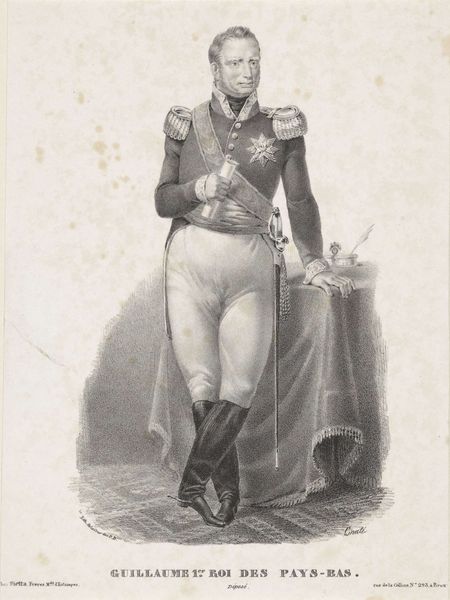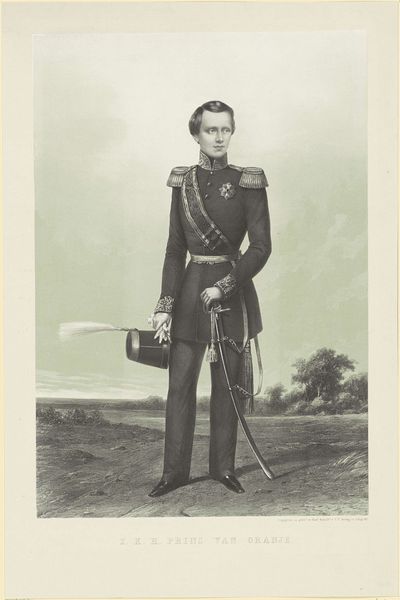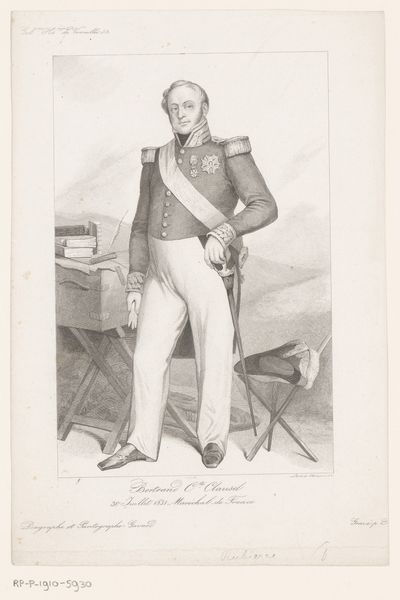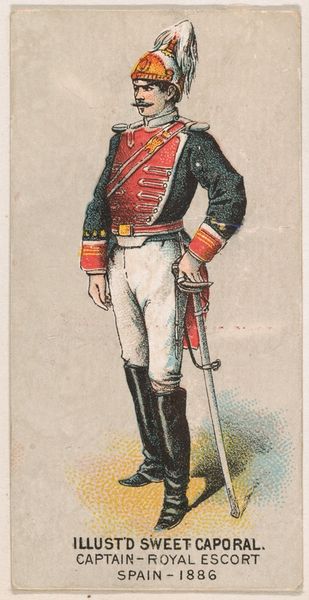
engraving
#
portrait
#
old engraving style
#
figuration
#
history-painting
#
academic-art
#
engraving
Dimensions: height 363 mm, width 257 mm
Copyright: Rijks Museum: Open Domain
This print of Willem II, King of the Netherlands, was made using the technique of steel engraving. This was a popular choice for commercial printmaking in the 19th century, prized for its capacity to produce very fine lines and subtle tonal gradations. The making of steel engravings was an intricate, painstaking process. A design was first transferred onto a polished steel plate. Then, using specialized tools called burins, the engraver would cut lines into the metal, the depth and density of which determined the amount of ink they would hold, and thus, the darkness of the printed line. The final print you see here is the result of immense labor and skill, producing many copies from the master plate. In this portrait, the medium captures the subject’s likeness, but also speaks volumes about the social context in which it was produced, intended to project an image of power, precision, and permanence. Appreciating the artistry behind its making invites us to look beyond the image itself, and to consider the conditions of labor, politics, and consumption that brought it into being.
Comments
No comments
Be the first to comment and join the conversation on the ultimate creative platform.
